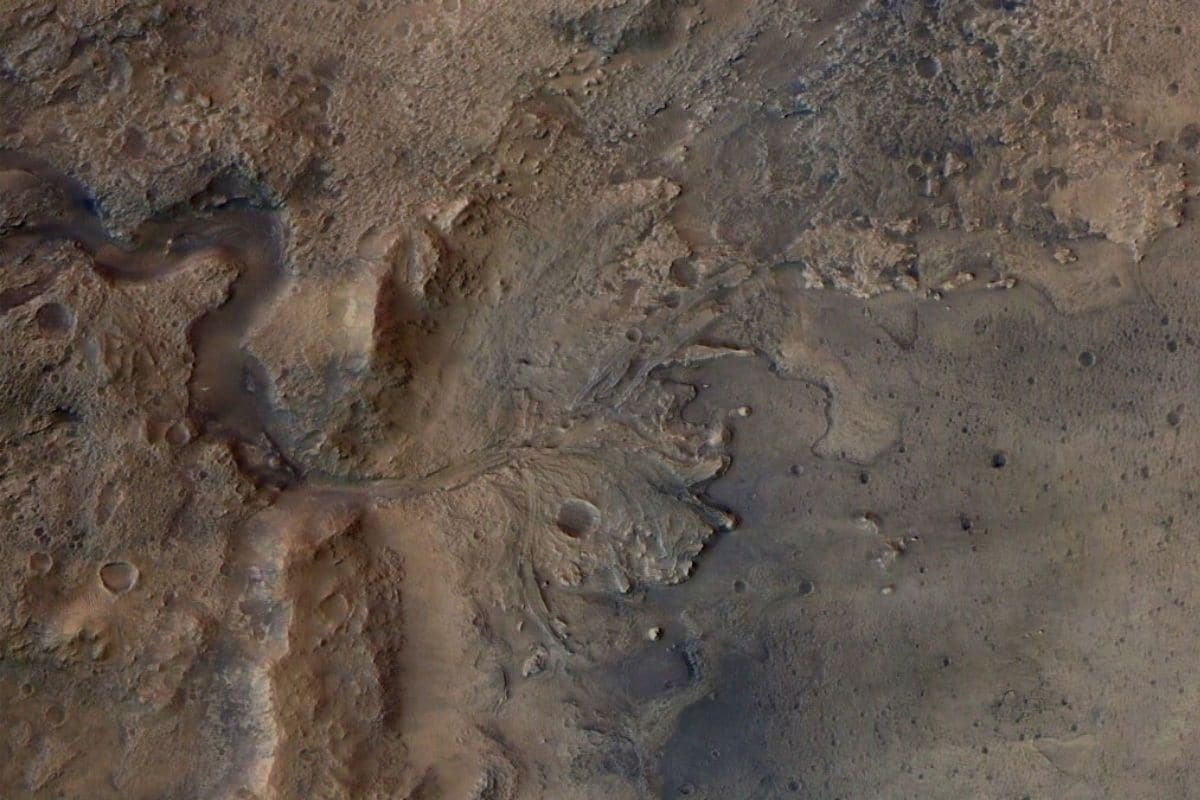
The bottom under the rover’s wheels was once red hot lava.
Mars rover Perseverance has been roaming the Martian Jezero crater since February. It is no coincidence that the rover went to study this place. Researchers think that about 3.5 billion years ago, the Jezero Crater was filled with water carried to the crater by rivers. However, the Perseverance team now makes a surprising discovery. Because what they didn’t know was that the rock Perseverance has been rolling over since landing was probably formed from red-hot lava.
Rock
Even before Perseverance landed on the red planet, the science team behind the mission had wondered about the origin of the rock in Jezero Crater. Could they be sedimentary rocks — compacted accumulations of mineral particles that may have been carried to the crater by ancient rivers — or igneous rocks — possibly formed in lava flows propelled to the surface by a now-defunct Martian volcano. “I began to despair that we might never find the answer,” said researcher Ken Farley.
Imagine yourself in the Jezero crater in this video.
PIXL instrument
Still, using the PIXL tool, the team managed to (Planetary Instrument for X-ray Lithochemistry) get a good look at a shaved-off rock from the South Séítah area. PIXL sends out an X-ray and then analyzes the light that bounces back. That reflected light can then tell what kind of material is in rock and Martian soil. “It all suddenly became clear,” said Farley.
brac
In mid-November, Perseverance analyzed the piece of rock nicknamed “Brac” by the mission team. And the PIXL data shows that the rock consists of an unprecedented amount of olivine crystals engulfed by pyroxene crystals. “This indicates that the rock was formed in slowly cooling magma,” explains Farley. “Think of a lava lake or magma chamber.” Future research will show whether the olivine-rich rock formed in a lava lake that cooled on the surface or in a subterranean magma chamber that was later exposed by erosion.
Organic Compounds
In addition to these interesting findings, the researchers also found that the Jezero Crater has come into contact with water several times over the centuries. Some rocks even contain organic compounds. In this case, it concerns carbon-containing molecules. The researchers found these molecules not only in the interior of the shaved rock, but also in the dust on the rock.
To live?
While that is of course an exciting discovery, it does not mean that life ever existed in the Jezero Crater. This is because organic matter can be formed by both biological and non-biological processes. “Curiosity also discovered organic matter at its landing site in Gale Crater,” study researcher Luther Beegle recalled. Preserving these organic compounds in ancient rocks – regardless of origin – does mean that potential biosignatures (signs of life) are likely to be well preserved as well. “However, many more analyzes need to be done to uncover exactly how the newly discovered organic compounds came to be,” Beegle points out.
martian monster
Perseverance has stored the new Mars sample in an airtight titanium tube. Meanwhile, of the 43 tubes it brought, the rover has sealed six so far. All tubes will then be used during future Sample Return Missions be transported back to Earth. Here, the Mars samples will then be thoroughly studied with powerful laboratory equipment that in many cases is far too large to send to Mars. “When all these samples are brought to Earth, they will be a source of scientific research and discovery for years to come,” Beegle said.
Researchers have had pieces of Mars in their hands before, but they have always been Martian meteorites. However, thanks to Perseverance and later Mars missions, they can now look forward to carefully selected Mars samples that are also carefully and airtightly stored and thus arrive on Earth pristine. Some patience is in order; it is likely that the samples that Perseverance is now collecting will not be delivered to Earth until the beginning of the next decade.
Source material:
“NASA’s Perseverance Mars Rover Makes Surprising Discoveries” – NASA
Image at the top of this article: ESA/DLR/FU-Berlin